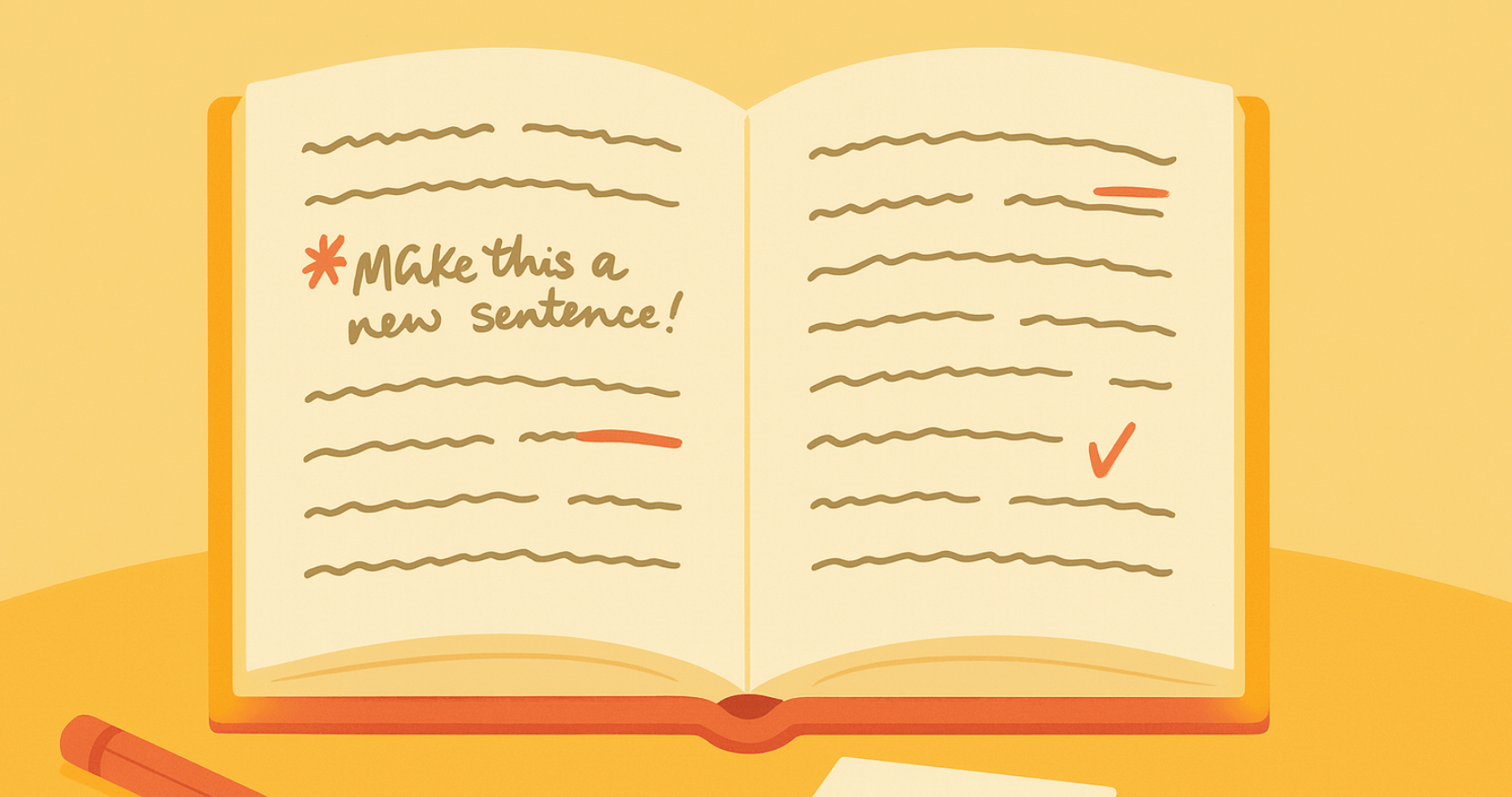Ever dreamed of publishing your book and making money from it—without waiting for a publisher’s approval? You’re not alone. Traditionally, getting a book into readers’ hands meant navigating the slow and unpredictable world of publishing houses. You’d submit your manuscript, cross your fingers, and hope an editor saw potential in your work. Even if they did, the publisher would take control of your book’s design, pricing, marketing, and royalties—often leaving you with just a fraction of the profits.
But times have changed. Self-publishing has exploded, giving authors full control over their work, creative decisions, and, most importantly, their earnings. Platforms like Amazon Kindle Direct Publishing (KDP) have made it easier than ever to publish and sell books worldwide—on your terms. No gatekeepers. No lengthy approval processes. Just you, your book, and a global audience at your fingertips.
And the best part? Self-published authors are making real money. In 2022 alone, Amazon KDP paid out a staggering $522 million in royalties, a 16% jump from the $450 million distributed in 2021.
Amazon’s massive reach, powerful recommendation algorithms, and built-in marketing tools make it the go-to platform for self-publishers. Whether you’re a first-time writer or a seasoned author looking to maximize your profits, selling your book on Amazon puts you in control.
In this guide, you’ll learn exactly how to publish and sell your book on Amazon, maximize your royalties, and make your mark in the publishing world—without needing a publisher.
Amazon Publishing Services: How to Sell Your Book on Amazon
Want to sell your book on Amazon without going through a traditional publisher? You’re in the right place. Amazon self-publishing lets you take full control—no gatekeepers, no long waiting times, just you and distributing your book to reach a global audience.
With Kindle Direct Publishing (KDP), you can publish your book as an ebook or paperback, set your own price, and start making sales in just a few days.
Amazon makes it simple to publish. Here’s what you’ll need:
- A manuscript formatted for ebook or print
- Copyright protection (optional but recommended). You don’t need to register a copyright before uploading your book to Amazon, however it is highly recommended.
- A professional-looking book cover (Amazon provides free tools, but a custom design is best)
- A compelling book title and description to grab attention
- Relevant keywords and categories to help readers find your book
Once your book is live, it’s available for millions of readers to discover. And if you opt for Amazon’s expanded distribution, your book can also be made available to bookstores, libraries, and universities.
Creating a Product Listing That Sells
Your book’s product detail page is where readers decide whether to buy. Think of it as your online storefront—it needs to stand out. Here’s what makes a great listing:
- A strong title and subtitle that make your book easy to find
- An engaging book description that makes readers want to know more
- The Look Inside feature, so people can preview your book before buying
- A professional book cover that matches your genre and grabs attention
- Reader reviews—the more, the better, as they build trust
How Much Can You Earn?
Amazon offers two main royalty options for ebooks:
- 70% royalties for books priced between $2.99 and $9.99
- 35% royalties for books outside that range or in select countries
For paperbacks, you earn 60% of the list price, minus printing costs. If you enroll in KDP Select, you can also earn money from Kindle Unlimited, where you’re paid based on how many pages readers consume. (More on this later!)
Amazon’s Publishing Tools and Marketing Features
Beyond publishing, Amazon provides several tools to help authors market their books:
- Amazon Ads, which promote books within search results and on product pages
- Kindle Countdown Deals, allowing limited-time price promotions
- Amazon’s recommendation algorithm, which increases visibility based on sales, reviews, and reader engagement
According to a report by the Association of American Publishers (AAP), the self-publishing industry has expanded significantly in recent years, with digital books and independent authors accounting for an increasing share of book sales. This trend underscores the power of Amazon’s publishing services in giving authors direct access to a global audience.
Setting Up an Amazon Seller Account
To sell your book on Amazon, you need an Amazon Seller account. This is where you’ll manage everything—book listings, pricing, and payments. The setup is simple, and whether you’re publishing one book or multiple titles, Amazon gives you the tools to handle everything yourself.
How to Create an Amazon Seller Account
1. Go to Amazon Seller Central – This is Amazon’s platform for managing book sales.
2. Choose Your Account Type – There are two options:
- Individual Account – If you plan to sell fewer than 40 books per month, this is the most cost-effective choice. There’s no monthly fee, but Amazon takes a per-book selling fee.
- Professional Account – If you expect higher sales, this plan charges a monthly fee but removes per-item fees and gives access to advanced tools, like bulk listing and Amazon Ads.
3. Enter Your Personal Information – Your name, email, and a password are required to create your account.
4. Provide Business Details – If you’re publishing under your own name, you can enter your personal details. If you have a business, you’ll need to add your company name and address.
5. Submit Tax Information – Amazon needs your Tax Identification Number (TIN) for tax reporting.
- If you’re a sole proprietor, you can use your Social Security Number (SSN).
- If you have a business entity, you’ll need an Employer Identification Number (EIN).
6. Set Up Your Payment Details – Enter your bank account information so Amazon can deposit your Amazon book publishing royalties. Make sure everything is correct to avoid delays in getting paid.
Choosing the Right Selling Plan
If you’re only selling a single book or making occasional sales, the Individual Plan makes the most sense. If you’re publishing multiple books or plan to sell consistently, the Professional Plan is a better choice since it includes bulk listing tools, inventory management, and access to Amazon’s advertising services.
Getting your Amazon Seller account set up correctly ensures that payments arrive on time and that your book appears in Amazon self publishing listings without issues.
Your Publishing Journey Awaits – Start NowSelf Publishing Amazon Royalties: How Much Can You Earn?
Royalties on Amazon depend on book format, pricing, and distribution choices. Understanding how Amazon pays authors helps in setting the right price and maximizing author earnings while keeping books competitive in the marketplace.
Amazon Ebook Royalties (Kindle Direct Publishing – KDP)
If you’re publishing a Kindle ebook, Amazon offers two royalty options:
70% royalty option
- Available for books priced between $2.99 and $9.99
- Distribution must include select territories (like the US, UK, Canada, and Australia)
- A small delivery fee is deducted based on file size (usually a few cents per book)
35% royalty option
- Available for books priced below $2.99 or above $9.99
- No delivery fees apply
- Works in all Amazon territories
For most authors, the 70% royalty option is the best choice, as it allows for higher earnings per sale. A book priced at $4.99 will earn about $3.40 per sale under the 70% plan, compared to $1.75 per sale under the 35% plan.
Amazon Paperback Royalties
Paperback royalties are different from ebooks because printing costs are involved.
- Amazon pays 60% of the list price for paperback sales.
- Printing costs are deducted before royalties are calculated.
- The total royalty amount depends on page count, paper type, and book dimensions.
For example:
- A 200-page paperback priced at $12.99 would generate approximately $4.55 in royalties after printing costs.
- A 350-page book priced at $14.99 would earn around $4.10 per sale, as printing costs are higher.
Amazon’s Print Cost Calculator helps estimate how much you’ll earn per book.
KDP Select and Kindle Unlimited Earnings
Authors who enroll their book in KDP Select can earn additional income through Kindle Unlimited (KU) and the Kindle Owners’ Lending Library (KOLL).
- Readers can borrow your book, and you earn money based on how many pages they read.
- Amazon pays from the KDP Global Fund, which varies each month.
- On average, authors earn $0.004 to $0.005 per page read.
A 300-page book fully read in KU could earn around $1.20 to $1.50 per reader. This is often more than what a sale at a low price would generate, making KDP Select a valuable option for high-engagement genres like romance and thrillers.
How to Price Your Book for Maximum Earnings
Setting the right price on Amazon is more than just choosing a number—it’s a balance between profit, reader expectations, and market trends. A well-priced book can attract more buyers, increase royalties, and boost long-term sales.
Pricing too low may increase downloads but reduce overall earnings, while pricing too high can drive readers toward more affordable alternatives. By researching comparable books in your genre and testing different price points, you can find the ideal balance that maximizes both visibility and profits.
1. Aim for the 70% Royalty Bracket
- Pricing your ebook between $2.99 and $9.99 ensures you qualify for the higher 70% royalty rate.
- Most Kindle books perform well at $3.99–$6.99, balancing affordability and profit.
2. Consider Market Expectations
- Research similar books in your genre to see how they are priced.
- If competitors price books at $4.99, undercutting to $0.99 may hurt perceived value.
3. Adjust Prices for Promotions
- Running limited-time discounts (e.g., dropping a $4.99 book to $2.99) can boost rankings.
- Enrolling in Kindle Countdown Deals lets you temporarily lower your price while keeping the 70% royalty.
4. Factor in Printing Costs for Paperbacks
- A $12.99 to $14.99 price point is standard for most self-published paperbacks.
- Books with fewer pages (under 200) can be priced slightly lower to encourage sales.
By strategically pricing your book, choosing the right royalty option, and leveraging Kindle Unlimited and promotions, you can maximize your earnings while keeping your book competitive in the marketplace.
How to Publish a Book on Amazon for Free
Self-publishing on Amazon doesn’t have to cost anything. With Kindle Direct Publishing (KDP), authors can format, design, and distribute their books worldwide without upfront expenses. Amazon provides free tools for manuscript formatting, cover design, and book previewing, allowing authors to publish professionally without hiring outside services.
Free Tools for Publishing on Amazon
Amazon offers several built-in resources to help authors prepare their books for publication:
- Kindle Create – A free tool that helps format manuscripts for both eBooks and print. It provides templates, text styling options, and automatic table of contents creation.
- Cover Creator – A tool within KDP that allows authors to design book covers using pre-made templates and customizable features.
- Kindle Previewer – Enables authors to preview their eBook on different Kindle devices to ensure proper formatting and readability.
These tools are designed to streamline the self-publishing process (just like Spines!), eliminating the need for costly formatting and design services.
How to Format and Upload Your Book Without Paying Upfront
Publishing a book for free requires careful formatting to ensure a professional-looking final product. Here’s how to do it:
1. Prepare Your Manuscript: Write and edit your manuscript using software like Microsoft Word or Google Docs. Save the file in .docx or .pdf format, which KDP supports.
2. Format Your Book for Amazon: Use Kindle Create to apply professional layouts, adjust text formatting, and add page breaks. This tool is suitable for both eBooks and print versions.
3. Design a Book Cover: While Cover Creator provides basic templates, authors can also use Canva or Adobe Express for more customization. A high-quality book cover is essential for sales, even when using free tools.
4. Upload to KDP: Create an Amazon KDP account, upload your manuscript and cover, select a price, and set distribution preferences. The KDP dashboard walks you through every step, ensuring your book meets Amazon’s publishing standards.
Self Publishing on Amazon Pros and Cons
Self-publishing on Amazon has transformed the way authors bring their books to market. With Kindle Direct Publishing (KDP), authors retain full control over their work, set their own prices, and earn higher royalties than traditional publishing. However, self-publishing also comes with challenges, such as handling marketing and distribution independently. Understanding both the advantages and drawbacks can help you decide if this is the right path for your book.
Pros of Self Publishing on Amazon
1. Higher Royalties:: Traditional publishers typically pay authors 10%–15% royalties on print books and 25% on ebooks. In contrast, Amazon’s KDP royalty structure allows authors to earn:
- 70% royalties on Kindle ebooks priced between $2.99 and $9.99
- 60% royalties on paperbacks (minus printing costs)
With self-publishing, authors keep a larger share of their earnings without splitting profits with a publisher.
2. Full Creative Control: Self-publishing lets you make all the decisions. This means you can publish exactly how you want without interference from agents or editors.
3. Faster Time to Market: Traditional publishing can take 1–2 years from manuscript acceptance to bookstore shelves. With KDP, you can publish your book in a few days and make updates whenever needed.
4. Global Distribution: Amazon offers immediate access to millions of readers worldwide. Books are sold in multiple marketplaces, including the US, UK, Canada, Australia, and Europe, with options for expanded distribution to bookstores and libraries.
5. No Upfront Costs: Publishing with KDP is free, unlike vanity presses or hybrid publishers that charge fees. Authors can use Amazon’s free tools to format, design, and upload their books without paying for publishing services.
6. Ability to Update Your Book Anytime: Unlike traditionally published books, where updates require a new edition, self-published authors can edit and re-upload their manuscripts at any time—whether fixing typos, updating content, or refreshing the cover.
Cons of Self Publishing on Amazon
1. Marketing Not Included: Amazon provides some promotional tools, like Kindle Countdown Deals and Amazon Ads, but you are responsible for marketing.
2. High Competition: Amazon publishes thousands of new books every day, making it harder to stand out.
- Optimizing your book title, cover, and keywords is essential for visibility.
- Investing in professional editing and design can make a book more competitive.
3. No Advance Payment: Traditional publishers pay authors upfront advances, but self-published authors only earn when books sell. If a book doesn’t gain traction, there’s no guaranteed income.
4. Technical and Formatting Challenges: While Amazon provides Kindle Create for free formatting, some authors may struggle with:
- Ebook conversion errors
- Print formatting inconsistencies
- Metadata and keyword selection
Hiring a professional formatter can solve these issues, but it adds to the cost of self-publishing.
Navigating Seller Central
Seller Central acts as the command center for independent authors and publishers selling on Amazon. This comprehensive dashboard provides access to all the necessary tools and insights for managing your book listings, monitoring sales, and interacting with customers. Understanding how to effectively navigate Seller Central is essential for maximizing your success on Amazon.
Upon logging into your Seller Central account, you’ll find a user-friendly interface that displays vital information such as recent orders, inventory levels, and performance metrics. The dashboard is customizable, allowing you to prioritize information relevant to your specific needs.
Key Features and Tools:
- Inventory Management: Seller Central offers robust inventory management tools that enable you to add new book listings, update existing ones, and manage stock levels. The interface is intuitive, allowing for easy uploads of book details, including titles, descriptions, and cover images. For authors with multiple titles, the bulk upload feature can save significant time.
- Pricing Tools: Competitive pricing is crucial on Amazon. Seller Central provides pricing tools that suggest optimal prices based on market trends and competitor pricing, helping you stay competitive while maximizing profits.
- Fulfillment Options: Whether you fulfill orders yourself or use Amazon’s Fulfillment by Amazon (FBA) service, Seller Central offers comprehensive tools to manage shipping and fulfillment. FBA can be particularly advantageous, as it leverages Amazon’s extensive logistics network to offer Prime shipping, enhancing the attractiveness of your books to potential buyers.
Tips for Effective Use:
- Regularly Review Performance Metrics: Seller Central provides detailed analytics on sales, customer traffic, and conversion rates. Regularly reviewing these metrics can help you understand what’s working and what needs adjustment in your sales strategy.
- Stay on Top of Inventory: Keep a close eye on your inventory levels to avoid stockouts, which can negatively impact your rankings and sales potential.
- Explore Amazon’s Resources: Seller Central also offers a wealth of resources, including tutorials and forums, where you can learn best practices and get advice from more experienced sellers.
Mastering Seller Central is key to effectively managing your business models and Amazon sales channel. From listing and pricing to starting selling your books, to fulfilling orders and engaging with customers.
Marketing and Customer Engagement
Amazon is the largest online book retailer, holding a 67% market share of e-book sales in the U.S. and $28 billion in global book sales, it remains the go-to platform for authors looking to reach a massive audience. Given Amazon’s dominance, strategic marketing is essential to make your book stand out.
Maximizing Visibility
- Optimize Your Listings: Incorporate relevant keywords into your book’s title, description, and backend keywords to improve searchability. This practice helps align your book with potential readers’ search queries.
- Utilize Amazon Advertising: Leverage Amazon’s sponsored ads to increase your book’s visibility. These pay-per-click ads can target customers searching for specific keywords or browsing similar books, thereby reaching a more targeted audience.
- Participate in KDP Select: Enrolling your ebook in KDP Select makes it eligible for Kindle Unlimited, where you’re compensated based on the number of pages read, and the Kindle Owners’ Lending Library, which can broaden your readership.
Leveraging Customer Reviews
Customer reviews are crucial in building trust and influencing purchasing decisions. Encourage satisfied readers to leave positive reviews to enhance your book’s credibility. Research indicates that online reviews significantly impact book sales, as consumers often rely on them before making purchase decisions.
- Prompt Communication: Respond swiftly to customer inquiries and feedback, demonstrating that you value their input and support.
- Handle Issues Efficiently: Address any issues or complaints promptly and professionally, aiming to resolve them to the customer’s satisfaction.
- Go the Extra Mile: Small gestures, like personalized thank-you messages or follow-ups, can significantly enhance customer satisfaction and lead to positive reviews and word-of-mouth referrals.
Implementing effective marketing and customer engagement strategies not only increases your book’s visibility on Amazon but also builds a loyal reader base, laying the groundwork for long-term success as an independent author.
Turning Your Manuscript into a Bestseller
Self-publishing on Amazon offers unmatched control, global reach, and higher royalty potential, giving independent authors the opportunity to succeed on their own terms. By setting up your Amazon Seller account, optimizing your book’s visibility, and leveraging Amazon’s marketing tools, you can position your book in front of millions of potential readers.
Success in self-publishing isn’t just about publishing—it’s about strategy. The most successful authors treat their books like a business, continuously refining their marketing, pricing, and engagement efforts. With Amazon’s extensive distribution network, advertising options, and customer analytics, independent authors have more resources than ever to build a readership and generate consistent sales. Read more on mastering self-publishing: Self-Publishing Success Stories: Lessons from Bestselling Authors.
Whether you’re publishing your first book or expanding your catalog, Amazon remains the most powerful platform for independent authors to thrive. By taking the time to understand its tools and strategies, you can turn your book into a profitable, long-term success.
FAQ – Publishing on Amazon KDP
Q: Do I need a publisher to sell my book on Amazon?
No, you don’t need a traditional publisher. Amazon Kindle Direct Publishing (KDP) allows independent authors to self-publish and sell their books worldwide without any upfront costs.
Q: How much does it cost to sell a book on Amazon?
Publishing on KDP is free, but Amazon takes a commission from each sale. Ebooks have a 70% or 35% royalty rate, while paperbacks offer a 60% royalty minus printing costs. If using Fulfillment by Amazon (FBA) for print books, additional storage and fulfillment fees apply.
Q: What is the best way to market my book using Amazon book advertising?
Amazon offers Sponsored Ads that allow authors to target specific keywords, categories, or audiences. Running Amazon book advertising campaigns can increase visibility and drive more book sales. Ads appear in search results, product pages, and Kindle device recommendations.
Q: How do I price my book for maximum earnings?
Ebooks priced between $2.99 and $9.99 qualify for Amazon’s 70% royalty option, while paperbacks should be priced competitively based on genre and printing costs. Researching similar books and using Amazon’s pricing tools can help optimize earnings.
Q: How many books do I need to sell to become an Amazon bestseller?
There is no fixed number, but Amazon bestseller rankings are updated hourly. Selling 200–500 books in a short time frame within a specific category can often push a book to the #1 spot in its category.
Q: Can I make money selling books on Amazon?
Yes, but success depends on factors like book quality, marketing, and competition. Many self-published authors make consistent income through a combination of organic sales, Kindle Unlimited page reads, and Amazon book advertising.
Q: What role do customer reviews play in book sales?
Customer reviews impact your book’s credibility, rankings, and conversions. Books with more positive reviews tend to rank higher in search results and attract more buyers. Encouraging readers to leave reviews is a key part of a successful book launch strategy.
Q: Can I sell physical books through Amazon FBA?
Yes, Fulfillment by Amazon (FBA) allows authors to store and ship print books using Amazon’s logistics. This enables Prime shipping eligibility, making books more attractive to buyers. However, FBA comes with storage and fulfillment fees, so authors should weigh the costs against the benefits.







